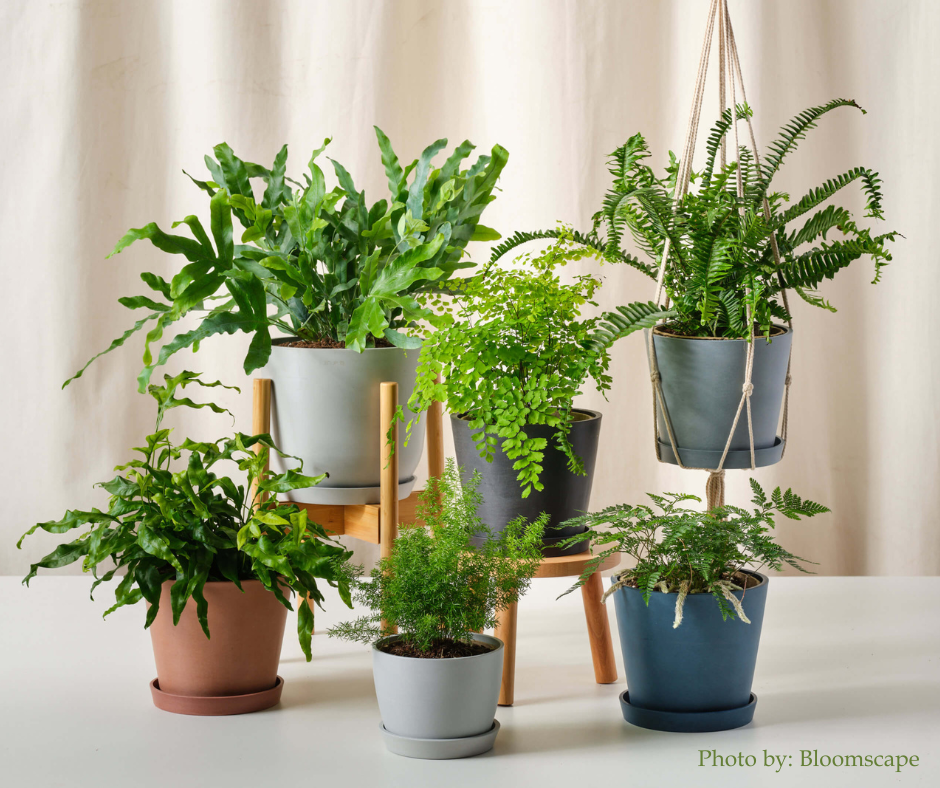Benefits of Ferns as Indoor Plants

The Benefits of Ferns as Indoor Plants
Ferns have been around for millions of years. Today, they continue to be a valuable addition to homes as versatile indoor plants. Known for their lush green fronds, ferns bring aesthetic and practical benefits to interior spaces.
Growing Conditions for Indoor Ferns
Most ferns thrive in bright, indirect light and environments with high humidity. For this reason, rooms such as bathrooms and kitchens often provide ideal conditions. Ferns also require consistently moist soil, though overwatering should be avoided to prevent root rot.
Air Quality Improvement
One of the most important benefits of ferns is their ability to improve indoor air quality. A well-known NASA Clean Air Study demonstrated that ferns, along with other houseplants, can reduce indoor air pollutants! These pollutants include formaldehyde, xylene and toluene. They are chemicals commonly released by building material, furniture & cleaning products.
Ferns contribute to air purification in two ways:
- Fronds with large surface areas absorb airborne toxins.
- Soil microorganisms associated with ferns help break down pollutants further.
This mechanism makes ferns effective natural air filters, creating healthier indoor environments.
Aesthetic and Psychological Benefits
Beyond their air-purifying qualities, ferns contribute to the overall atmosphere of a space. Their rich green tones and leafy foliage create a calming effect that enhances interior design. Studies on indoor greenery have also suggested that plants may reduce stress and improve overall well-being.
Ferns are more than decorative plants. They are resilient, effective in supporting indoor air quality, and adaptable to a range of home environments. With proper light, moisture and humidity, ferns can provide long-lasting beauty and health benefits.
